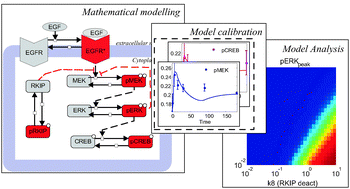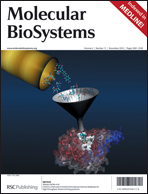The investigation of the structure and dynamics of signal transduction systems through data-based mathematical models in ordinary differential equations or other paradigms has proven to be a successful approach in recent times. Extending this concept, we here analysed the use of kinetic models based on power-law terms with non-integer kinetic orders in the validation of hypotheses concerning regulatory structures in signalling systems. We integrated pre-existent biological knowledge, hypotheses and experimental quantitative data into a power-law model to validate the existence of certain regulatory loops in the Ras/Raf-1/MEK/ERK pathway, a MAPK pathway involved in the transduction of mitogenic and differentiation signals. Towards this end, samples of a human mammary epithelial cell line (MCF-10A) were used to obtain time-series data, characterising the behaviour of the system after epidermal growth factor stimulation in different scenarios of expression for the critical players of the system regarding the investigated loops (e.g., the inhibitory protein RKIP). The mathematical model was calibrated using a computational procedure that included: analysis of structural identifiability, global ranking of parameters to detect the most sensitivity ones towards the experimental setup, model calibration using global optimization methods to find the parameter values that better fit the data, and practical identifiability analysis to estimate the confidence in the estimated values for the parameters. The obtained model was used to perform computational simulations concerning the role of the investigated regulatory loops in the time response of the signalling pathway. Our findings suggest that the special regularity in the structure of the power-law terms make them suitable for a data-based validation of regulatory loops in signalling pathways. The model-based analysis performed identified RKIP as an actual inhibitor of the activation of the ERK pathway, but also suggested the existence of an intense feedback-loop control of the pathway by the activated ERK that maybe responsible for the damped oscillations we saw in the fraction of activated MEK both in the experiments and simulations. In addition, the model analysis suggested that phosphorylation/deactivation of RKIP during the transient stimulation may have a significant effect on the signalling peaks of both MEK and ERK. This later result suggests that dynamic modulation of signal inhibitors during stimulation may be a regulatory mechanism in ERK signalling and other pathways.

You have access to this article
 Please wait while we load your content...
Something went wrong. Try again?
Please wait while we load your content...
Something went wrong. Try again?


 Please wait while we load your content...
Please wait while we load your content...